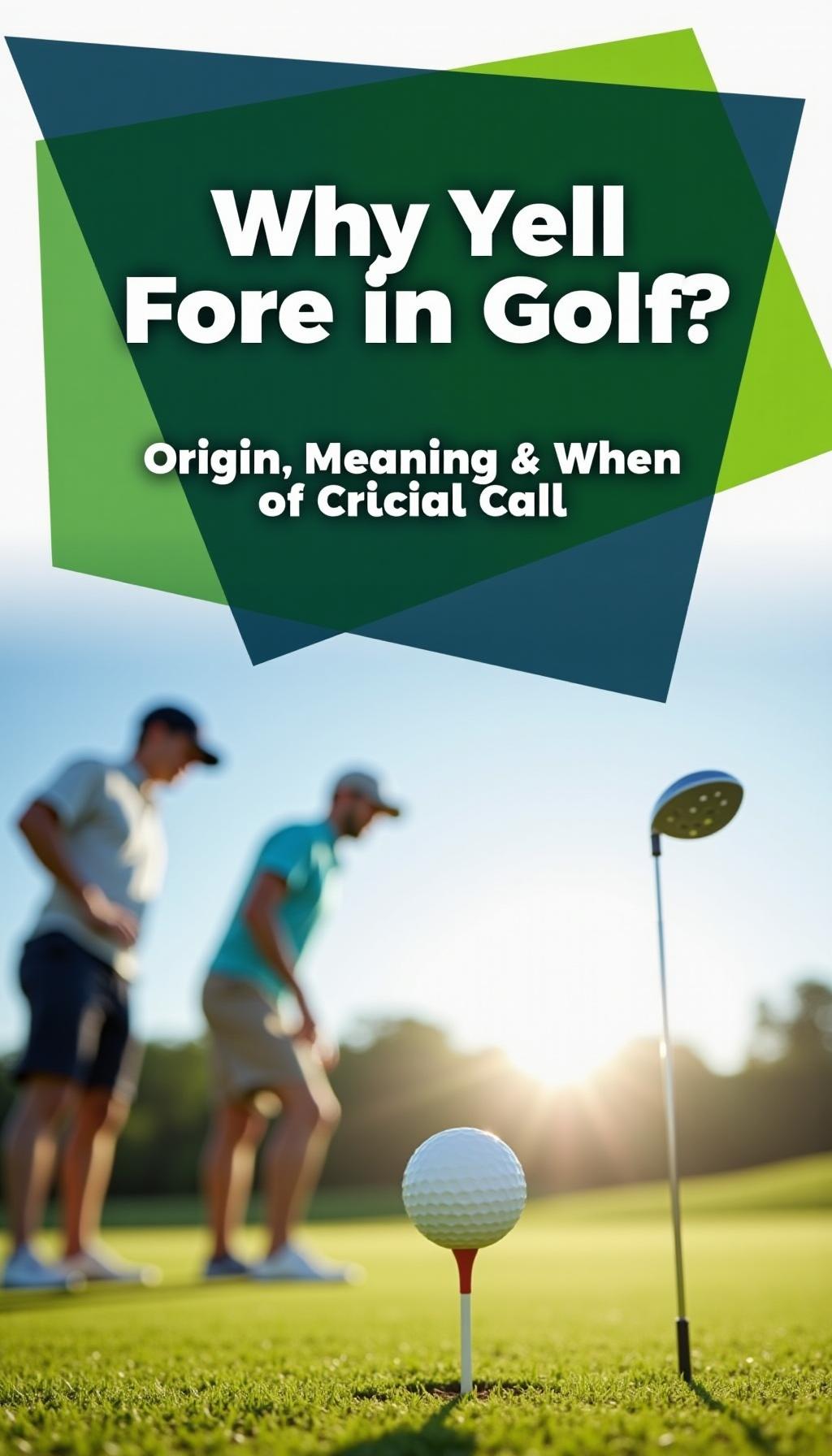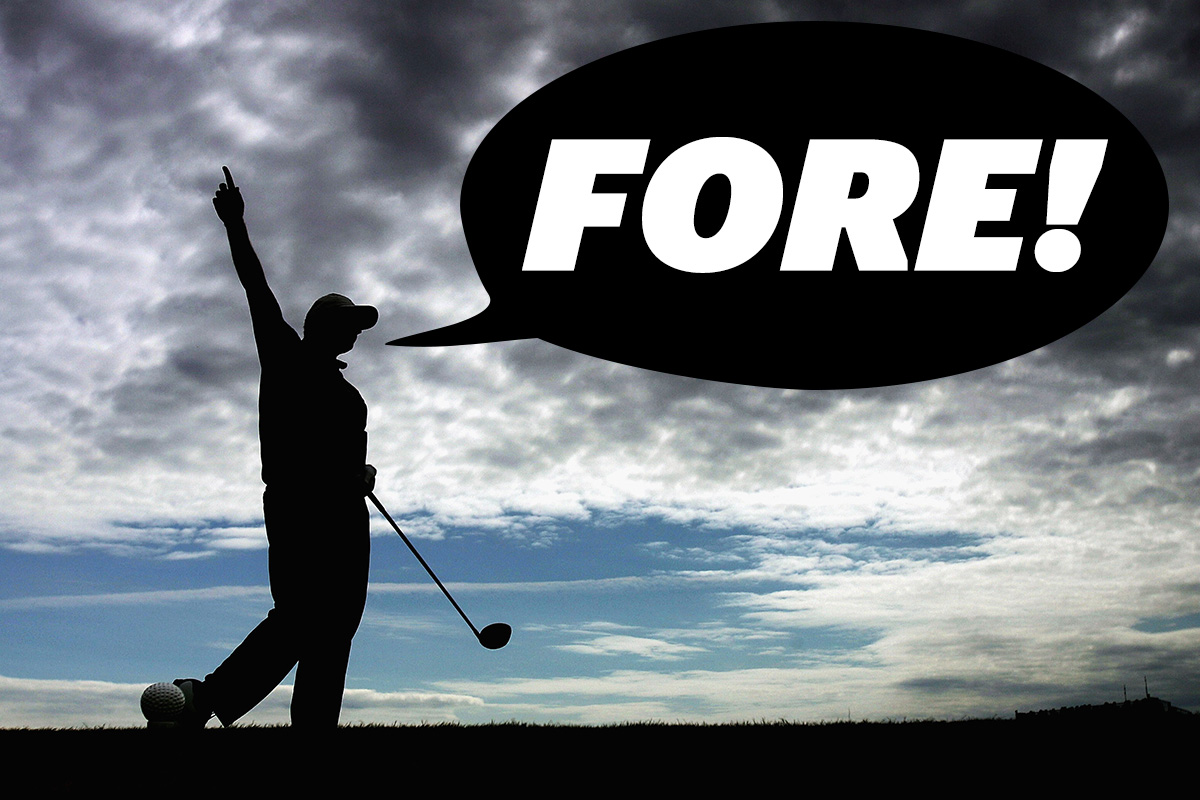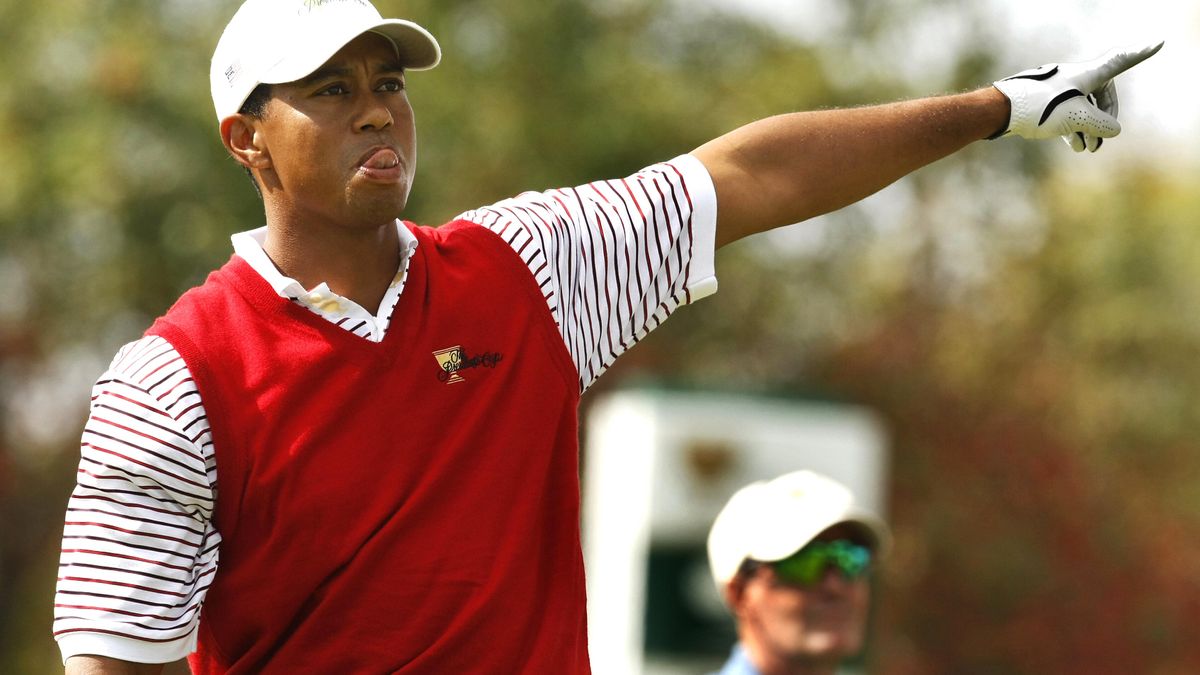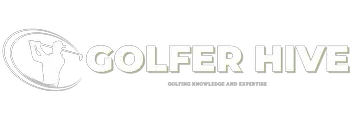As an Amazon Associate GolferHive.com earns from qualifying purchases.
Why Yell Fore in Golf? Origin, Meaning & When to Shout It
Ever heard a sharp shout of “Fore!” slice through the quiet of a golf course and wondered about its urgent meaning? You’re not alone. Many people are curious about the origin of this unique golf term, when it’s appropriate to yell it, and exactly what to do when you hear it. This guide will unravel the history, etiquette, and critical safety protocols behind one of golf’s most important words.
In golf, players yell “fore!” as a crucial warning to alert others on the course of an errant, potentially dangerous golf ball traveling in their direction. Its primary purpose is to prevent serious injury from a fast-moving ball.
Leveraging a deep analysis of golf’s long-standing traditions and safety rules, this post breaks down everything you need to know. We’ll explore the fascinating historical theories behind the term, provide a clear guide on when you must shout it, explain the life-saving reaction you should have when you hear it, and clarify its role in the official Rules of Golf.
Key Facts
- A Critical Warning: The primary purpose of yelling “fore!” is to prevent serious injury, as golf balls can travel at speeds exceeding 100 miles per hour.
- Widely Accepted Origin: The most accepted theory is that “fore!” is a shortened version of “forecaddie,” the term for a person who located expensive and easily lost golf balls in the 17th and 18th centuries.
- Military Theory: A compelling alternate theory, supported by the USGA, suggests “fore!” originated from the military warning “beware before,” used by artillerymen to warn troops ahead.
- It’s a Responsibility, Not Just Etiquette: Failing to yell “fore!” when necessary is considered a serious breach of etiquette and can be classified as serious misconduct under the Rules of Golf, potentially leading to disqualification.
- Immediate Action Required: When you hear “fore!”, your first instinct should be to duck and cover your head with your arms, not to look for the ball, which increases your risk of being hit.
What “Fore!” Means in Golf and Why It’s a Critical Warning
In golf, players yell “fore!” as a crucial warning to alert others on the course of an errant, potentially dangerous golf ball traveling in their direction. Its primary purpose is to prevent serious injury. Think of it as the golf course equivalent of a car horn—a simple sound that prevents a serious accident. Given that a golf ball can travel over 100 miles per hour, this warning is a non-negotiable part of the game.

The call serves as an immediate heads up to anyone in the potential path of a misdirected shot. It’s not just a courtesy; it’s a vital safety protocol and a cornerstone of golf etiquette. The core purpose is straightforward and essential:
- To Prevent Injury: A direct hit from a golf ball can cause serious harm. The warning gives people precious seconds to react.
- To Alert Unseen Players: Golf courses have hills, trees, and doglegs. You must yell “fore!” even if you can’t see players ahead, as a ball can easily travel into an unseen area.
- To Uphold Sportsmanship: Looking out for the safety of others is a fundamental principle of golf. Failing to yell “fore!” is considered an extremely serious breach of conduct.
The Historical Origins of “Fore!”: Unpacking the Theories
Why do golfers yell this specific word? While the exact etymology isn’t set in stone, several compelling theories trace its roots back centuries, adding a rich layer of history to this simple warning. While we may never know the one true origin, which theory do you find most convincing?
- The Forecaddie Theory: This is the most widely accepted explanation, suggesting “fore!” is simply a shortened version of the word “forecaddie.”
- The Military Theory: This theory, supported by the USGA, links the term to an 18th-century artillery warning.
- The Gaelic Contraction Theory: A less common theory suggests “fore!” comes from the Gaelic phrase >”Faugh A Ballagh!” meaning “Clear the way!”
Regardless of its true origin, the term was documented in golf literature as early as 1857, proving its long-standing role in the sport’s tradition.
The Forecaddie Theory: A Tale of Expensive Golf Balls
The most popular theory begins with the role of the forecaddie. In the 17th and 18th centuries, golf balls were handmade and expensive. Courses were also far less manicured than they are today. To avoid losing these valuable assets, golfers employed a “forecaddie” to walk ahead of the group and spot where each shot landed. When a player hit their shot, they would yell “forecaddie!” to give the spotter a heads-up that a ball was on its way. Over time, for speed and efficiency, this call was shortened to the simple, sharp cry of “fore!”. This role still exists today in professional tournaments and at high-end courses, where they are now more commonly called “spotters.”
Quick Fact: Early golf balls were so valuable that losing one was a significant financial hit, making the forecaddie’s job essential!
The Military Theory: From Cannons to Clubs
Another compelling origin story comes from the battlefield. The USGA supports this theory, which proposes that golfers adopted the term from military artillerymen in the 17th and 18th centuries. When firing cannons over the heads of their own infantry who were positioned downrange, artillerymen would shout a warning to the troops in front.
“beware before!”
This command alerted the soldiers to the incoming cannonball flying overhead. It is believed that this phrase was eventually shortened to “fore!” and adopted by golfers, who were launching their own “missiles” down the fairway.

When to Yell “Fore!”: A Golfer’s Guide to On-Course Safety
Knowing the history is interesting, but knowing when to use the term is critical. A golfer must yell “fore!” any time their ball veers off its intended path and has the potential to hit another person, including shots heading towards other fairways, groups, or unseen areas. You have a responsibility to warn others on the course.
Pro Tip: “A simple rule of thumb: If you have even a slight doubt about someone’s safety, always shout ‘fore!’. It’s better to be safe than sorry.”
Here are specific scenarios where shouting “fore!” is mandatory golf etiquette and safety protocol:
- Wild Drives: Your tee shot slices or hooks dramatically towards an adjacent fairway where other people are playing.
- Wayward Irons: An approach shot to the green goes well off-line and heads toward another group on a different tee box or green.
- Unpredictable Ricochets: Your ball hits a tree, cart path, or rock and shoots off in an unexpected and potentially dangerous direction.
- Blind Shots: You are hitting a shot over a hill or around a corner and cannot be certain the area ahead is clear.
- Unexpectedly Long Shots: You hit a chip or bunker shot with far more power than intended, sending it flying over the green towards people behind it.
In every case, you should shout as loudly as you can and aim your voice in the direction the ball is traveling.
How to React When You Hear “Fore!”
Just as important as knowing when to yell “fore!” is knowing how to react when you hear it. Your immediate response can be the difference between a close call and a serious injury.
When you hear “fore!” on a golf course, immediately duck and cover your head with your arms. Do not turn and look for the ball, as this increases your risk of being hit. Your primary goal is to protect your head and face.
Follow these steps for maximum safety:
- Duck and Cover Immediately: Immediately take protective action rather than trying to locate the ball. Your first instinct must be to crouch down and bring your hands and arms over your head and neck for protection.
- Seek Shelter: If possible, get behind something solid like a golf cart, a large tree trunk, or your golf bag.
- Do NOT Look for the Ball: It is a natural but dangerous instinct to turn toward the sound to see where the ball is. This exposes your face and head, the most vulnerable parts of your body. Stay covered until you hear the ball land or are told it’s all clear.
“Fore!” in Modern Golf: Etiquette, Rules, and Professional Play
While the Rules of Golf do not have a specific penalty for not yelling “fore!”, failing to do so can be considered serious misconduct under Section 1.2a and could lead to disqualification. The responsibility always remains with the player, even at the professional level. This rule underscores the game’s emphasis on integrity, consideration, and safety.
The official rulebook frames player conduct with an expectation of safety.
| Rule Section | Expectation | Consequence |
|---|---|---|
| Section 1.2a | “Conduct Expected of All Players” includes acting with integrity and showing consideration to others. | Failing to warn others of danger (by not yelling “fore”) can be deemed “serious misconduct,” which could result in disqualification. |
Even though professional golfers have spotters and course marshals, they still face criticism when they fail to shout a warning. This is because the fundamental responsibility to warn others of potential danger always rests with the player who hit the errant shot.
Rhetorical question: Given the emphasis on safety in the rules, should there be a direct penalty for failing to shout ‘fore!’?

To ensure everyone’s safety on the course, having the right gear, like head protection or highly visible golf balls, can make a significant difference.
FAQs About Yelling Fore in Golf
Here are answers to some of the most common questions golfers and spectators have about this crucial warning call.
Why do they say “fore please” in golf tournaments?
“Fore please, now driving” is a phrase used by tournament announcers to ask the crowd for silence and attention before a player tees off. It is different from the warning cry of “fore!” for an errant shot. The announcer’s phrase is a request for quiet, while the player’s shout is an urgent alert for safety.
Why do some professional golfers get criticized for not shouting fore?
Professionals are criticized because, despite the presence of course marshals, the fundamental rule of etiquette and safety dictates that the player who hit the errant shot is ultimately responsible for warning others of potential danger. As referenced in the Rules of Golf, this responsibility remains with the player as a core principle of sportsmanship.
Is it okay to add “left” or “right” when I yell fore?
While adding “left” or “right” can be helpful, it can also cause confusion depending on the listener’s orientation. The most important thing is to shout “FORE!” loudly and clearly in the direction of the ball. A loud, clear warning is always the first priority, as directional information can sometimes be misinterpreted in the heat of the moment.
What happens if you don’t yell fore and someone gets hurt?
Failing to yell “fore” is a serious breach of golf etiquette. If someone is injured as a result, it could be considered serious misconduct under the Rules of Golf, potentially leading to disqualification. Beyond the rules, it represents a significant failure in a golfer’s duty of care to others on the course. Consequences include:
* Breach of Etiquette: You will be seen as a disrespectful and unsafe player.
* Risk of Injury to Others: You are directly putting other people in harm’s way.
* Potential Disqualification: In a competitive setting, you can be disqualified for serious misconduct.
Final Summary: “Fore!” is More Than a Word—It’s a Responsibility
From its historical roots as a message to a “forecaddie” or a warning from an artilleryman, “fore!” has evolved into the universal sound for “watch out!” on the golf course. It’s a simple word with a powerful purpose: protecting everyone who shares the love of the game. Understanding its meaning, its history, and, most importantly, its proper use is a fundamental responsibility for every single golfer.
Here are the most critical takeaways:
- “Fore!” Means Danger: It is an urgent and immediate warning of an incoming, errant golf ball.
- Safety is Paramount: When you hear it, duck and cover immediately. When you hit a bad shot, yell it loudly and without hesitation.
- It’s a Core Part of the Game: Yelling “fore!” is a non-negotiable aspect of golf etiquette, sportsmanship, and the official rules of conduct.
The next time you’re on the course, remember that a simple, loud shout of ‘fore!’ is one of the most important signs of respect you can show your fellow players.
Last update on 2025-09-15 / Affiliate links / Images from Amazon Product Advertising API

